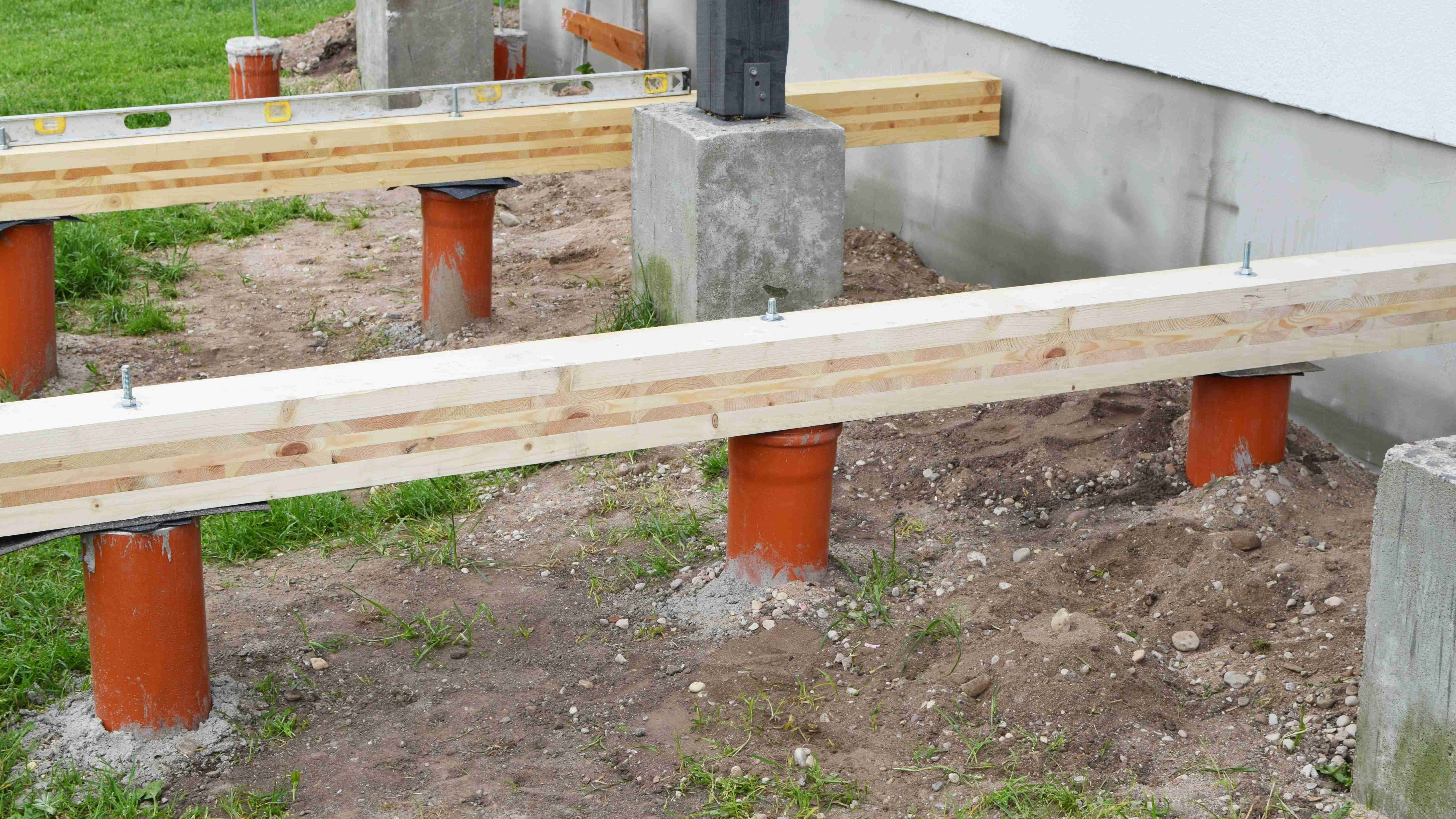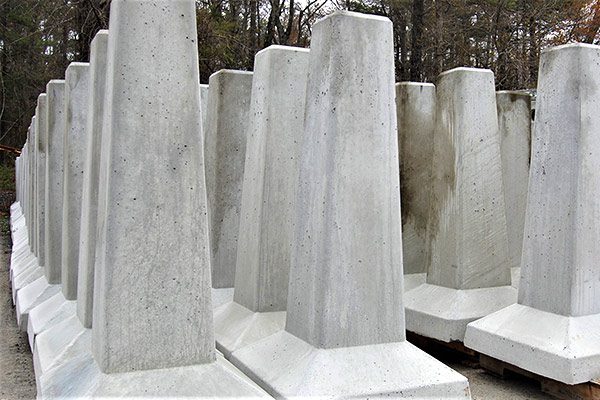Choosing the Right Deck Footings for Stability and Durability
When it involves constructing a deck, one of one of the most essential decisions you will make is selecting the right grounds for stability and durability. The long life and security of your deck depend heavily on the kind of footings you pick, as they supply the important assistance and stability to hold up against the test of time. With a myriad of alternatives available, it can be frustrating to identify which grounds are best suited for your certain needs. In this conversation, we will certainly check out the numerous sorts of deck footings, take into consideration the essential variables to weigh when making a choice, and delve into the advantages and disadvantages of different choices. By the end, you will have a more clear understanding of the selections at hand and be much better equipped to make a notified choice for your deck task.
Types of Deck Grounds
There are numerous kinds of deck grounds that can be used, each offering unique advantages and considerations. One typical type of ground is the concrete pier ground. These grounds are composed of a round opening filled with concrete, which offers a strong structure for the deck posts. Concrete pier grounds are relatively very easy to install and provide exceptional security, making them a prominent option for lots of deck tasks.
These footings are mounted by screwing them into the ground, which develops a safe foundation for the deck. They additionally enable for easy change and leveling of the deck if required.
Additionally, some builders decide for precast concrete footings. These grounds are made from durable concrete and come in different sizes and shapes to fit different deck styles. Precast concrete footings are practical to install and provide a secure base for the deck structure.
Ultimately, another alternative is the post-in-anchor footing system. This kind of ground includes driving a steel anchor into the ground and affixing it to the deck message. It supplies flexibility in regards to placing the deck messages and is ideal for decks with lightweight structures.
When picking the best kind of deck ground, it is vital to take into consideration elements such as dirt problems, deck load, and regional building regulations (Deck Footings). Consulting with a specialist contractor or architectural designer can aid guarantee the proper ground is picked for a safe and steady deck
Factors to Consider When Selecting Grounds
When picking the appropriate footings for a deck, it is vital to carefully consider different aspects such as dirt problems, deck lots, and adherence to neighborhood building regulations. These elements play a considerable function in guaranteeing the stability and toughness of the deck framework.
Among the key variables to consider is the dirt problems. The kind of dirt on which the deck will certainly be constructed establishes the sort of grounds called for. Decks constructed on loosened or sandy soils may require much deeper grounds to supply appropriate support and avoid settling. On the other hand, decks improved clay or large dirts may require grounds that can suit the soil's tendency to increase and agreement.
One more important variable is the deck tons. The weight of the deck, including the products utilized and any possible online loads such as furnishings or gatherings, have to be thought about when selecting grounds. The footings have to be created to bear the weight of the deck and disperse it evenly to avoid any type of architectural problems or failings.
Finally, adherence to local building ordinance is paramount. Structure codes vary from region to area, and it is necessary to abide by the particular needs set by the neighborhood authorities. Deck Footings. These codes guarantee that the deck is constructed safely and fulfills the necessary requirements for structural stability and load-bearing ability
Concrete Footings: Disadvantages and pros

Concrete grounds offer several benefits and disadvantages when used as the structure for a deck. On the favorable side, concrete grounds supply superb security and toughness.
An additional benefit of concrete footings is their flexibility. They can be poured right into various sizes and shapes to accommodate various deck designs and arrangements. Concrete grounds can be personalized to fit the particular needs and needs of the deck framework.
Nevertheless, there are likewise some drawbacks to making use of concrete grounds. One major downside is the expense and labor associated with their installation. Concrete grounds need excavation and frequently require the support of heavy equipment. This can boost the overall price of the deck job and may call for expert assistance.

Helical Piers Vs. Sonotubes: Which Is Better?
In considering the structure alternatives for a deck, the comparison between helical piers and sonotubes is crucial in determining the premium option. They are twisted right into the ground utilizing hydraulic machinery, providing a resilient and secure structure for the deck.
The helical plates on the piers create a strong grasp with the soil, protecting against any type of activity or shifting of the deck. Sonotubes, on the other hand, depend exclusively on the concrete filling for stability, which might not offer the same level of stamina and resistance.
In regards to installation, helical piers are fairly much easier and faster to mount compared to sonotubes. The useful site hydraulic equipment made use of to twist the piers into the ground makes certain a efficient and quick process. Sonotubes, on the various other hand, call for excavating openings and pouring concrete, which can be lengthy and labor-intensive.
Additionally, helical piers are a more flexible option. If required, they can be made use of in various soil conditions and can be changed or strengthened. Sonotubes, on the various other hand, might require additional support, such as rebar, in check my blog specific dirt conditions or areas with high tons requirements.
Selecting the Right Footings for Your Deck's Dimensions
For optimum structural integrity, it is vital to thoroughly pick the suitable grounds that straighten with the measurements of your deck. The dimensions of your deck, including its length, height, and size, play a significant role in identifying the type and dimension of footings required.
When choosing grounds for your deck, it is essential to consider the load-bearing capability of the soil. The weight of the deck, integrated with the weight of any kind of furniture or individuals on it, exerts a considerable pressure on the footings (Deck Footings). It is vital to select footings that can sufficiently support this weight without sinking or moving over time.
The size and form of the grounds should additionally be taken into consideration. Larger decks with better dimensions call for bigger footings to supply enough security and support. The shape of the grounds, whether they are round or square, relies on the style and design of the deck. Furthermore, the depth at which the footings are mounted must be established based upon the frost line in your area to avoid any heaving or changing because of freezing temperature levels.
Conclusion
Finally, selecting the appropriate deck footings is critical for making sure security and durability. Aspects such as the kind of grounds, the deck's dimensions, and the advantages and disadvantages of various alternatives must be considered. Concrete footings offer toughness and long life, yet might be extra costly and taxing to install. Helical piers and sonotubes have their own benefits and disadvantages. Eventually, selecting the appropriate footings for your deck's particular requirements is necessary for a effective and durable framework.
These grounds are composed of a round hole filled with concrete, which provides a strong foundation for the deck messages. Concrete pier grounds are fairly easy to set up and provide excellent security, making them a prominent selection for lots of deck projects.
Precast concrete grounds are practical to set up and give a steady base for the deck framework.
It provides flexibility in terms of placing the deck articles and is appropriate for decks with website link lightweight structures.
Concrete footings provide a number of benefits and downsides when utilized as the foundation for a deck.